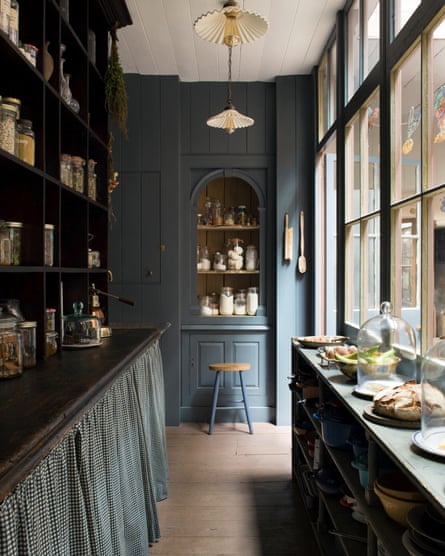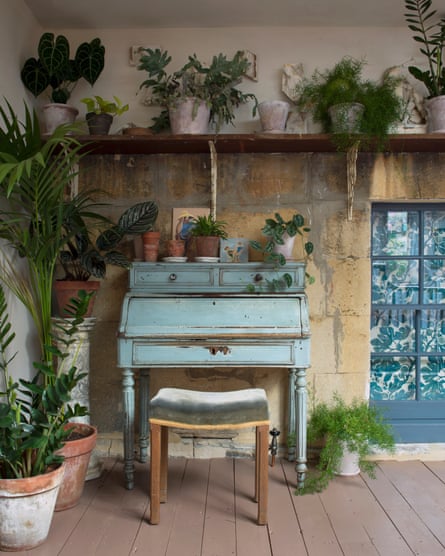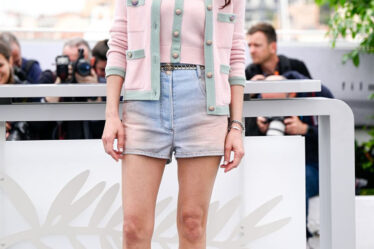
Renditions of Bach’s Goldberg Variations played on an 18th-century harpsichord float harmoniously out of a shop doorway and across a cobbled street. Peer through the glass windows of this Georgian shopfront in Bath to see flickering candlelight and a spellbound audience. This is Berdoulat.
What began as a fantasy for a small child who loved to play shop is today a splendid reality for designer Patrick Williams, who moved from London to Bath and opened the boutique hotel, Berdoulat & Breakfast, with his Turkish/Bulgarian wife, the photographer Neri Williams. Everything they sourced was local and handmade and guests lusted over the chic interiors and tasty Turkish breakfasts.
The pair, who met over a Spanish ham in a deli in Herne Hill, south London, decided they needed to take their vision a step further. They began to scout Bath for a building that would function as design practice, interiors shop, event space and family home for them and their daughters, Wren and Bonnie, and dogs, Elizabeth and Moon.
Built in 1739 and originally the birthplace of Bath Oliver biscuits, Berdoulat is now divided up into retail space and residence. The retail side is an ode to its rich emporium past. The long, 19th-century, wooden counter-top displays a gleaming set of brass scales while behind, rows of antique ceramic jars throng with exotic spices, liquorice sticks, French caramels, teas, coffee and homewares.
The original balcony soars above the counter and is the ultimate display space, resplendent with locally made products, vast elaborate wreaths of dried flowers, a flotilla of handstitched lampshades and a rippling selection of handsewn quilts.

The pair collaborate with an ever-changing cast of craftspeople who practise traditional skills: glass blowers, bakers, ceramicists, joiners, plaster-casters, knitters, painters, quilters and metalworkers. “We love the old methods,” says Neri. “Each has a set of aesthetics that complements the others. It is like conducting folk music.”
Open a discreet door at the back of the shop and you are immediately transported into a stylish, free-standing family kitchen. Painted a soft Edward Bulmer London Brown, the room unfolds into a sitting room, with a rose-pink sofa from eBay and a slipper chair beside it, carefully reupholstered by Patrick’s sister. The mouldings and casts on show above the fireplace were stripped by Patrick during lockdown.
Designing the kitchen, Patrick chose to approach it like a sitting room, using “proper pieces of furniture. I prefer simplicity,” he explains, “with freestanding pieces, whose proportions are not informed by a Bosch dishwasher.”
A generous pantry is divided from the main part of the kitchen by a glass partition, with doors either end to create good flow. Inside, an 1890 dresser is laden with cookery books, mason jars, cloches, platters, madeleine cake moulds and English creamers. Hidden below, behind neat navy and white gingham curtains, is the all-important dishwasher and storage for the detritus of family life: lunch boxes, scissors, paper, string, Sellotape…

Above the kitchen, a galleried room combines to unite the shop and home, hosted by a vast, glass lantern skylight, designed by Patrick to deliver a sense of open-plan living and allow daylight to pour into the room below. “It is like being in a Vermeer painting,” he says, “being lit from above.” The galleried landing functions as both playroom and library.
The full restoration project took four years to complete. The overall structure is made up of three interconnected buildings, each from a different era :Georgian, Regency and Victorian. With strict planning laws in place, Patrick needed to seek help from the Bath Preservation Trust to help him restore the spirit of the shop and make a viable home.
“As a designer, I was so excited,” he says. “It is an eccentric building, combining domestic, commercial and retail spaces with architectural elements from different periods. There was an inch of nicotine on the ceiling, it was literally dripping, and the heating was a coal-fired Rayburn. The basement had not been used since Victorian times and the atmosphere there was an untouched, preserved beauty.”

Upstairs, the girls’ bedroom, inspired by Giffords Circus, was designed to replicate the big top, complete with fringed pink curtains sewn by Neri. Across the galleried hall another set of stairs takes you to the Georgian side of the building directly above the shop and to an elegant master bedroom, painted in Berdoulat Green, a colour Patrick developed with Farrow & Ball that has its roots in an original Georgian green paint they discovered inside a cupboard in their now cosy winter living room.
Patrick and Neri’s beautiful home is an ode to British craftsmanship and architecture, a vision of pared-back simplicity revealing details, materials and craft, with each corner and product thoughtfully considered and carefully restored.



